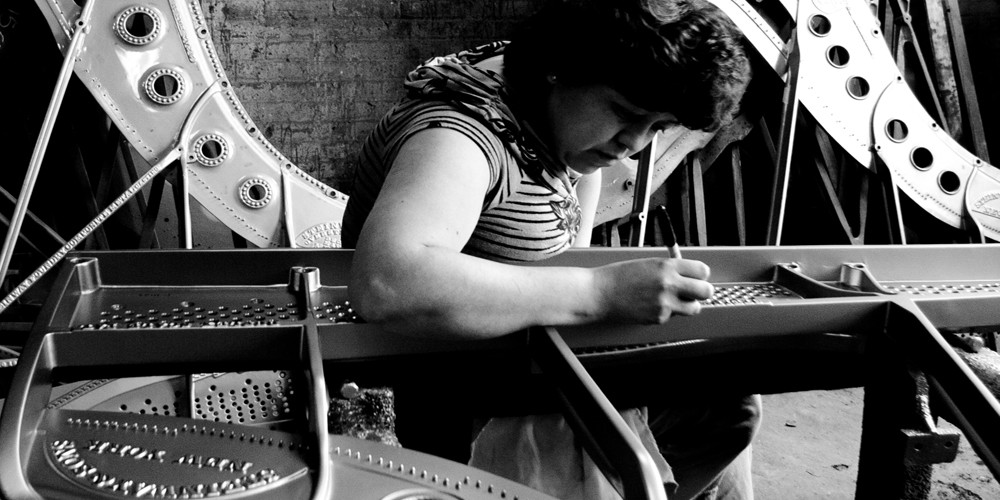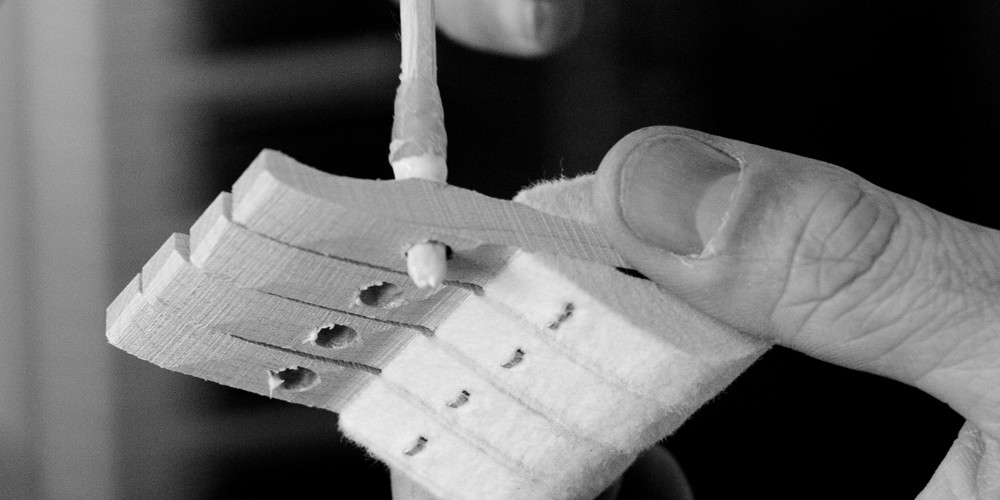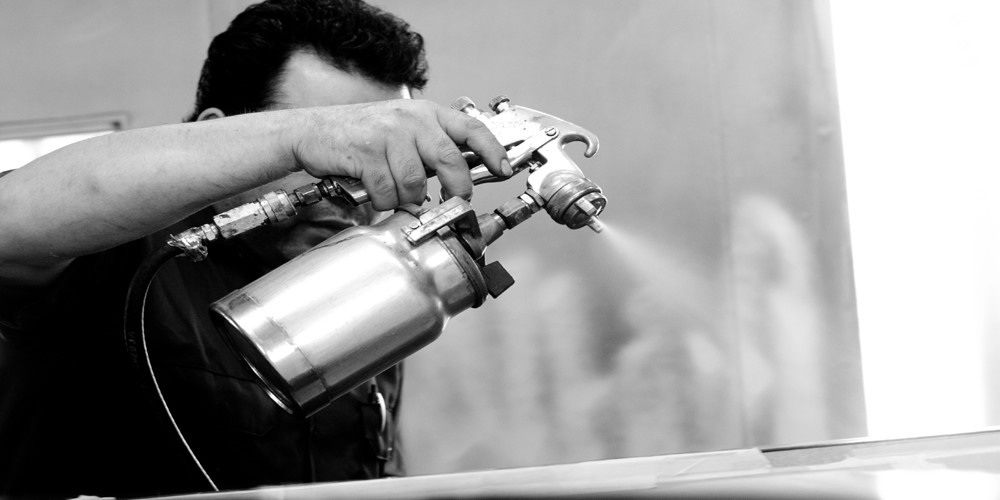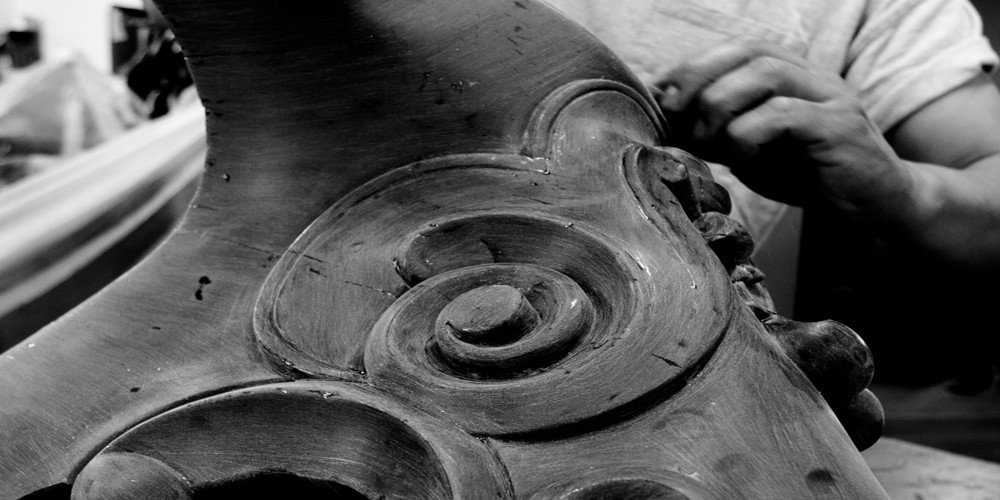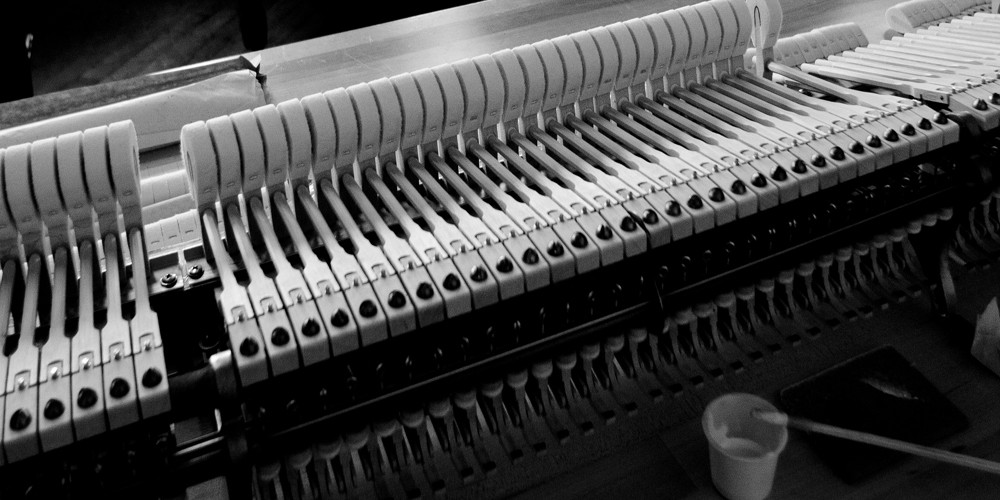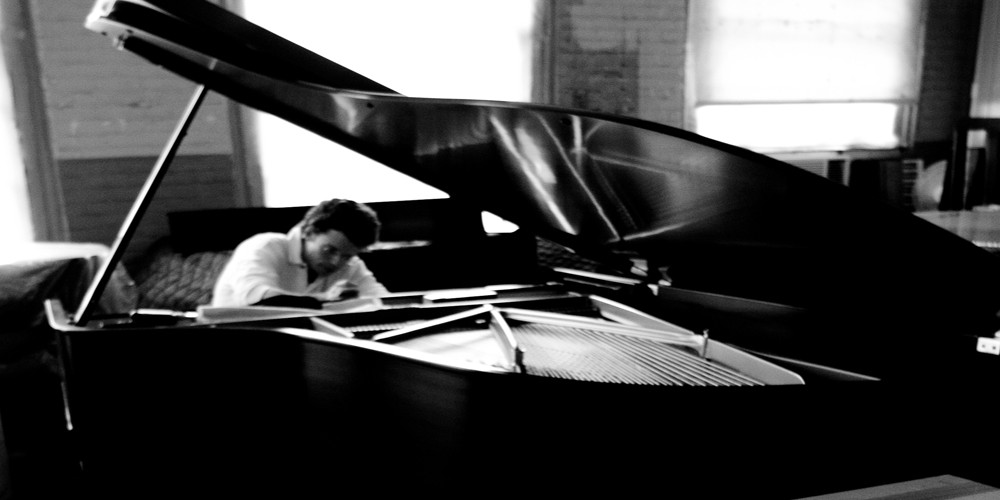Pressing a key on the piano’s keyboard causes a felt covered hammer to strike strings. The hammers rebound, allowing the strings to continue vibrating at their resonant frequency.These vibrations are transmitted through a bridge to a sounding board that couples the acoustic energy to the air so that it can be heard as sound.
When the key is released, a damper stops the string’s vibration.
The average modern piano has over 230 strings under a combined tension of 15 to 20 tons. A concert grand piano may have a combined string tension of up to 30 tons.
Pianos made in the eighteenth century were not as powerful and used low-tension wire made from an alloy different from the wire used today. Piano strings are made of high quality steel and must be able to endure years of extreme tension and fortissimo playing. Strings are manufactured in various diameters, with the thinnest wire employed in the highest treble while ascending in larger diameters down to the bass note section.
Broken piano strings need to be replaced quickly to reduce uneven wear on the hammer.
They can be replaced with a brand new string or repaired with a short piece of wire.
When restringing a piano with new strings, the steel strings are removed and carefully measured to determine what size of strings should be used for replacement. Bass strings must be removed and duplicated off-site and then replaced at a later date.
Please Note:
After a piano has been restrung, it should be tuned a minimum of four times the first year.

